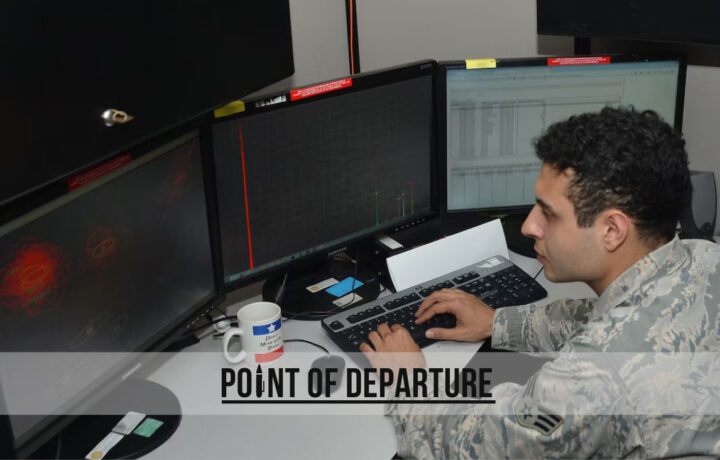“We are card counters at the blackjack table. And we’re gonna turn the odds on the casino.” – Billy Beane, Moneyball (2011)
Buzzwords. If there’s one thing we seem to be remarkably good at, it’s taking an old idea and reframing it with a shiny new term. Every profession is guilty of this, although the national security community tends to garner the most attention. Just last year, Elena Wicker wrote about this for War on the Rocks, remarking on the perilous nature of buzzwords: “They can be coopted into bumper stickers or denigrated as bingo squares. All buzzwords eventually lose their buzz.”
In the past year, no term has been used and abused more than “data,” especially when it applies to military logistics. We graduated from a term like “big data” (which was generally understood) to people waxing eloquently about “data literacy” and “data-centric” decision-making. Just recently, a National Defense Magazine article bemoaned “the way we build logisticians today,” adding “they’re sort of illiterate” when it comes to data, something “a logistician could get away with… 20 years ago.”
Then last week, I saw a thread on LinkedIn from a seemingly enlightened soul asking when we would start treating “data as a commodity” and wondering aloud when military logisticians would start making data-informed decisions. Maybe he was accustomed to using chicken bones and a Ouija board to make decisions, but data has always been a commodity, and leaders – logisticians included – have been using it to make decisions for centuries.
In the rush to use data as a buzzword, people aren’t asking the right question. It isn’t a matter of whether we make data-informed decisions or if data is a commodity. It’s a matter of whether we can elevate the art of data centricity. And if so, how?
Review and Analysis
In the mid-summer of 1991, I was a young lieutenant pulling weekend staff duty in our brigade headquarters, blowing an otherwise quiet Sunday morning working on homework. At the time, I was pursuing a graduate degree in systems management, a program with a data-centric curriculum, and weekend staff duty was an ideal time to work on assignments. The coursework was statistics heavy, and every class was analytically driven. Each week for two years, we would do a data deep dive in search of the narrative the numbers were telling us.
At some point that morning, the brigade commander emerged from his office and asked if I had a minute. Then-Colonel Roy Beauchamp had established himself as a force of nature within weeks of his arrival at Fort Campbell the previous summer, and this was my first – but not last – time I would step into his office. As a lieutenant, “face time” with the senior commander in the organization was beyond rare. I picked up my green notebook and followed him into his office. “Take a look at this,” he said, handing over a bound document. It was his graduate school thesis, a lengthy document focused on a system of data analytics he called “Review and Analysis (R&A),” using charts and methods that are common today but were far less so thirty-plus years ago.
He wanted to implement the system in the brigade to manage everything from sustainment to training, pushing his subordinate commanders to become better at predictive analysis and decision-making. But his charts – crafted using a typewriter and some creative effort – needed to be recreated with modern tools and simplified so anyone could put his system to use.
I left his office with his thesis in hand and perched myself at one of the Zenith 248 terminals in the brigade S-3. Opening Harvard Graphics – a reminder of just how long ago this took place – I went to work. When Colonel Beauchamp stepped into the office on Monday morning, a stack of full color charts was waiting. R&A, his data analytics system, was about to take the brigade by storm.
Aristotle and Data
The system was only the beginning. The charts presented various data sets on multiple axes, with upper and lower control limits established to emphasize readiness goals, supply wait time, and even weapons qualification rates. But the data only told one part of the story. It required a practiced eye and a sharp mind to understand the narrative behind the numbers, and an experienced hand to make informed decisions based on that narrative.
Data-centric or data-informed decision-making was nothing new, even in the early 90s. As a professional field, logistics has always been about the numbers: interpreting order-ship times, calculating stockage levels and reorder points, coordinating maintenance schedules, and managing distribution. In the same vein, just about every aspect of maintaining readiness – from personnel strength to training to operational readiness rates – has roots in numeracy. But, like most truly gifted senior leaders, Beauchamp believed in making qualitatively better decisions faster, and that required a transformational change in how data was interpreted.
He was a implementing a data analytics system that would provide the visual tools to evolve from reactive to predictive analysis. That necessitated learning to interpret data below the surface level noise, seeing emerging patterns and trends within the data, and making anticipatory decisions based on expert and strategic intuition. In the same way Napoleon applied coup d’oeil on the battlefield, those insights could be achieved through data analytics.
In many ways, decision-making is more art than science, a common topic of discussion in ancient Greek philosophy. Napoleon’s glance was, in fact, a demonstration of phronesis, an elevated form of practical wisdom that fuses experience, judgement, and study. The same holds true with data; interpreting and drawing predictive insights from data is a practiced skill that requires years to master. Making sound, anticipatory decisions based on those insights is a form of art largely dependent on phronesis.
In his own way, in his own time, Aristotle was a data whisperer. We just weren’t paying attention to what he was saying.



